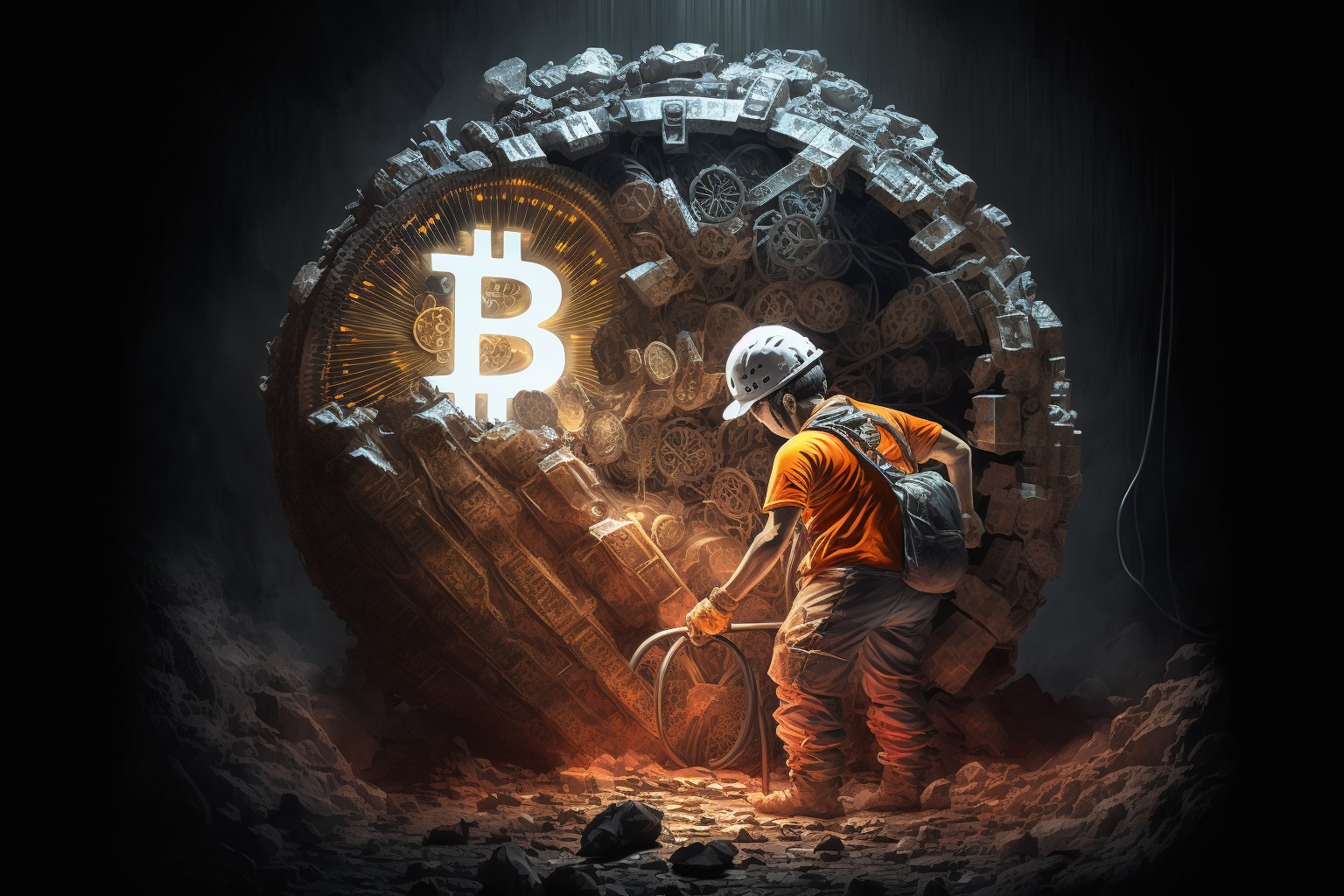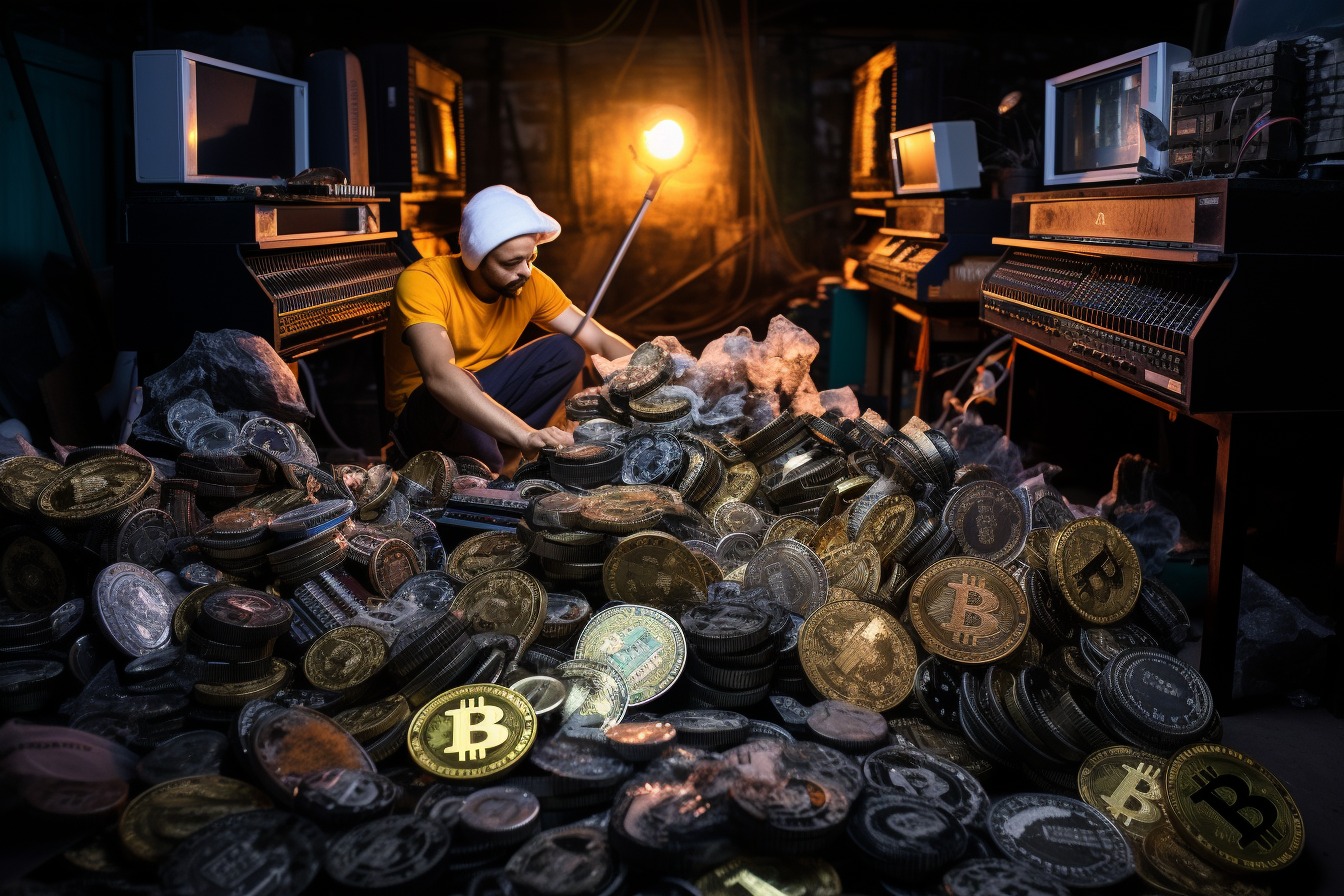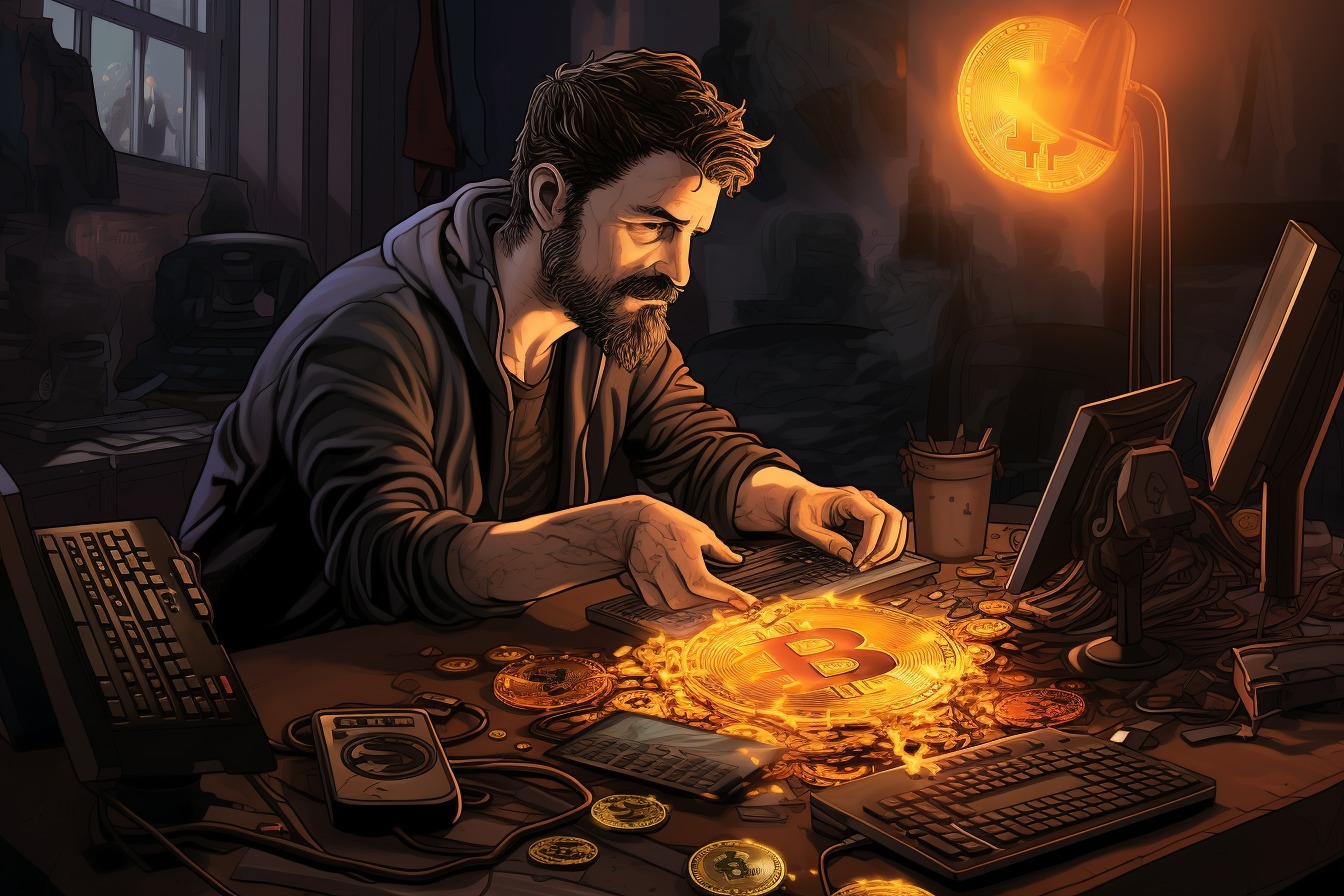People automatically assume that in order to mine bitcoin they need to outlay a significant investment in extremely expensive equipment, however that is not entirely accurate. Yes, the chances of finding a block and collecting the 6.25 BTC block reward are slim, however, there is always a chance. An example of this was on 09 June 2023 where a solo bitcoin miner won a full block bitcoin reward of 6.25 BTC.
This article will help explain the mechanics of bitcoin mining at home.
What is Bitcoin Mining?
Bitcoin mining is defined as the process of using specialized computer hardware to verify and record transactions via complex mathematical problems on the bitcoin blockchain and in return, miners are rewarded with newly minted bitcoins.
When a user actions a transaction on the bitcoin network, it is then broadcast to the network and grouped with other transactions into what is known as a block. Miners then compete to solve a complex mathematical puzzle in order to validate the block and add it to the blockchain. The first miner to solve the complex puzzle and validate the block is rewarded with newly minted bitcoins and transaction fees. This process of solving the puzzle and validating transactions is known as “mining bitcoin.”
The Early Days of Bitcoin Mining
The early days of bitcoin mining were significantly different from the current landscape. Here are some key points about the early days of bitcoin mining:
Mining with CPUs: In the early days of bitcoin, which began in 2009, mining could be done using central processing units (CPUs) commonly found in personal computers. Since the network was relatively small and the difficulty to mine was low, CPUs were sufficient to mine bitcoin.
Low competition: During the early years, there were only a few miners on the network, resulting in less competition. This meant that smaller or single miners could mine bitcoin relatively easily and earn a significant number of coins with minimal CPU power.
Low mining difficulty: The mining difficulty, which adjusts every 2016 blocks (approximately every two weeks), was significantly lower in the early days. This allowed miners to solve the cryptographic puzzles and mine blocks more quickly compared to the present difficulty level.
Higher block rewards: Initially, the block reward for successfully mining a block was 50 BTC. This reward was halved every 210,000 blocks (approximately four years) in an event known as the “halving.” The first halving occurred in 2012, reducing the block reward to 25 BTC.
GPU mining: As the popularity of bitcoin grew, miners began using graphics processing units (GPUs) to mine more efficiently than CPUs. GPUs provided a significant increase in processing power, allowing miners to mine more coins in less time.
Transition to ASIC mining: The introduction of the Asics miner (Application-Specific Integrated Circuits) marked a significant shift in bitcoin mining. ASICs are specialized hardware designed specifically for mining cryptocurrencies, offering significantly higher hashing power and energy efficiency compared to CPUs and GPUs. This led to a decline in CPU and mining via GPU, making it less profitable for individual miners.
Decentralization and mining pools: In the early days, many individual miners participated in mining bitcoin, contributing to the decentralization of the network. However, as mining became more competitive, many miners joined a mining pool, where they combined their computing power with other miners to increase their chances of mining a block. These pools allowed for more consistent earnings by distributing the rewards among participants based on their contribution.
Profitability and investment: In the early days, mining bitcoin was relatively easy and profitable for individual miners to start mining. However, as the network grew, the mining difficulty increased, and the block rewards reduced through halving’s. This made it more challenging for small-scale miners to compete with larger mining operations, which could afford more advanced hardware and benefit from economies of scale.
The early days of bitcoin mining laid the foundation for the industry we see today. The increased competition and the introduction of specialized mining hardware have made mining a more challenging and resource-intensive process, requiring huge investment to remain competitive.
Is it Possible to Mine Bitcoin on a Home PC?
In the early days, a standard multi-core CPU was enough to produce 50 bitcoins per block. This was due to the difficulty factor of bitcoin mining being relatively low and as a result, being able to mine at home was a lot more cost effective.
It is possible today to mine bitcoin using a home PC, but it is not profitable. The process of mining bitcoin requires significant computational power, and as the network has grown, the difficulty of mining has increased. This means that miners need to invest in specialized hardware, known as ASICs in order to have a chance of earning a profit.
A home PC is not powerful enough to compete with specialized mining hardware, and the electricity costs associated with running a PC for an extended period of time would likely exceed any potential profits. It is still possible to mine bitcoin using a home PC, but it would not be profitable and it’s not recommended.
Factors To Consider Before Getting Started
Bitcoin mining at home can be an interesting endeavor, but there are several factors to consider before getting started. Here’s an overview of the key points:
Hardware: In order to mine bitcoin at home, you need to acquire an ASIC miner which is designed specifically for mining cryptocurrencies. It’s important to research and invest in suitable ASIC miners to have a competitive edge.
Electricity costs: A bitcoin mining rig consumes a significant amount of electricity due to the mining power, so it’s essential to consider your local electricity rates. Mining profitability is closely tied to the cost of electricity. If your costs of electricity are high, it may impact your overall profitability. A golden rule is to always check the cost of electricity in your area before commencing mining.
Cooling and ventilation: ASIC miners generate a lot of heat, so it’s crucial to have adequate cooling and ventilation in place to prevent overheating. This might involve setting up fans, dedicated cooling systems, or even constructing a separate room with proper airflow.
Noise and space: ASIC miners can be noisy, especially when operating at full capacity. Ensure that you have a suitable space where the noise won’t be disruptive to your daily activities or annoy your neighbors.
Internet connection: A stable and reliable internet connection is necessary for mining, as the ASIC miners need to communicate with the mining pool or the bitcoin network.
Mining pool: Joining a mining pool is recommended for home miners. Miners join a mining pool which allows multiple miners to combine their computing power with other miners and share the rewards based on their contribution to the mining pools. This helps in achieving more consistent earnings compared to solo mining, where you might wait for a long time before finding a block.
Profitability: Bitcoin mining profitability depends on various factors, such as the price of bitcoin, mining difficulty, costs of electricity, and hardware efficiency. It’s essential to calculate your potential earnings and consider the return on investment (ROI) before investing in mining equipment.
Legal and regulatory considerations: Ensure that you comply with the local laws and regulations regarding cryptocurrency mining. Some regions might have specific requirements or restrictions on mining operations, so it is imperative that you do your due diligence when looking at cryptocurrency mining.
Maintenance and upgrades: ASIC miners require regular maintenance, including cleaning, firmware updates, download mining software and occasional repairs. Additionally, as the difficulty of mining increases over time, you might need to upgrade your hardware periodically to remain competitive in your mining pool.
Security: Secure your mining operations by implementing proper security measures, such as using strong passwords, enabling two-factor authentication, and keeping your mining software and firmware up to date.
Its important to note that in order to make a profit mining bitcoin at home, you will need to have a large investment in specialized equipment and to be in a location with a low cost of electricity. Due to the high competition and the difficulty of mining, it’s not recommendable to mine bitcoin at home for profit.
The Cost of Mining Bitcoin in Different Countries
It currently takes an estimated 1,449 kilowatt hours (kwh) of energy consumption to mine a single bitcoin. That’s the same amount of energy an average U.S. household consumes in approximately 13 years.
This is therefore why it is such a costly venture to get into, not to mention the rig set up costs. But exact prices fluctuate, depending on the location and the cost of electricity in the area.
Across 198 countries included in a survey, the average cost of bitcoin mining worked out to roughly $35,404 – which is currently more than bitcoins value of $30,562 on 13 July 2023. It is however important to be aware that fluctuating energy prices, and increase or decrease in miners on the network, constantly change the necessary energy and final cost.
It is imperative that in order to start mining at home, one should make sure that you have access to cheap electricity, otherwise this could blow your chances of being successful before you even get started.
The Cheapest and Most Expensive Countries to Mine Bitcoin
Recent statistics show that Kuwait is the cheapest country to mine bitcoin, with the cost of electricity being extremely cheap, costing approximately $1,393 to mine 1 x bitcoin.
Venezuela ranks as the number one most expensive country to mine 1 x bitcoin. It costs approximately $246,530 to mine a single bitcoin in the South American country, resulting in the process being far from profitable due to the energy consumption.
Time is Running Out For Mining Bitcoin at Home
Despite the steep costs of purchasing mining equipment in order to mine bitcoin at home, many people believe that its worth the upfront investment for earning bitcoin.
One major factor that makes bitcoin particularly appealing is its finite supply—there are only 21 million coins available for mining and as at the time of writing this article, more than 19,43 million bitcoin have already been mined.
When Will All the Bitcoin be Mined?
It is estimated that all bitcoins will be mined by the year 2140, at which point the last block reward will be released. If a bitcoin is lost or destroyed, it cannot be recovered, which will lead to a decrease in the total supply of bitcoins and an increase in their overall value.
It is important to know though, that with each bitcoin halving, the mining process and difficulty will be increased significantly and the small miners including those mining at home will fall away.
Another alternative to look at with the increased costs is cloud mining, although its important to note that there are a lot of scams involved with cloud mining as you are not in full control of your mining operation.
Conclusion
While the price of bitcoin is notorious for its volatility, its value has still grown significantly over the last decade. And if digital assets become mainstream as many people believe they will, this could boost the price of bitcoin even further.
About RR2 Capital
At RR2 Capital, we’re a pioneering Venture Capital (VC) firm empowering the ‘new internet’. To date, we’ve successfully invested in over 140 projects. Our mission is to capture value by investing in early stage projects and teams who are leading innovation and disruption within the Web 3.0 world.
For more information about RR² Capital and our expansive disruptive technology-focused investment portfolio, visit our website here, or send us a mail here.









